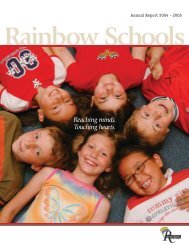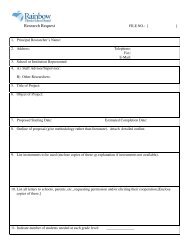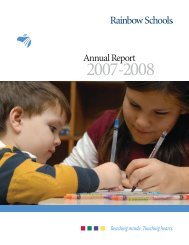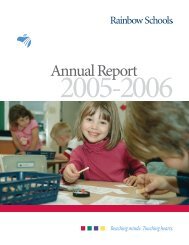Doing Mathematics with Your Child, Kindergarten to ... - EduGains
Doing Mathematics with Your Child, Kindergarten to ... - EduGains
Doing Mathematics with Your Child, Kindergarten to ... - EduGains
Create successful ePaper yourself
Turn your PDF publications into a flip-book with our unique Google optimized e-Paper software.
over aND over aGaiN!<br />
Describing Patterns<br />
PatterNiNG aND alGebra<br />
Predict How Many<br />
Grade 4 <strong>to</strong> Grade 6<br />
Benefits<br />
In a repeating pattern, the pattern core is the part that repeats over and over –<br />
for example, in the pattern ABB ABB ABB, the pattern core is ABB. Help your<br />
child recognize the structure of repeating patterns in these fun exercises!<br />
Benefits<br />
This activity helps your child <strong>to</strong> think about how a pattern continues<br />
beyond what he or she can see – the basis for mathematical predictions!<br />
Tip!<br />
Charts, tables and graphs are some ways <strong>to</strong> highlight patterns.<br />
Tip!<br />
Help your child <strong>to</strong> understand by showing the repeating part of<br />
the pattern at least three times. For example, in the pattern 3, 6, 5,<br />
10, 9, 18, 17, the pattern could be described as double the number<br />
and subtract one, double the number and subtract one, double the<br />
number and subtract one.<br />
• Lay a row of nine spoons so that each handle points up or down in a pattern <strong>with</strong><br />
a core of up, up, down (up, up, down; up, up, down; up, up, down). Ask your child <strong>to</strong><br />
extend the pattern.<br />
• Use bread tags or blocks <strong>to</strong> create a growing (or shrinking) pattern by using an<br />
initial in your name. Here’s an example for a growing pattern for the letter T:<br />
• Make this task more challenging and ask your child <strong>to</strong> describe and say the<br />
patterns aloud:<br />
• Make the pattern core longer – for example, up, up, down, up; up, up, down, up;<br />
up, up, down, up.<br />
Size 1 Size 2 Size 3 Size 4 Size 5<br />
• Change one of the elements in the pattern core – for example, up, up, down,<br />
sideways; up, up, down, sideways; up, up, down, sideways.<br />
• Explore growing patterns <strong>with</strong> your child by using <strong>to</strong>othpicks or straws. Ask your child<br />
<strong>to</strong> keep the pattern growing. What comes next?<br />
• Ask your child <strong>to</strong> try <strong>to</strong> create the next three T’s in the pattern, and ask her or<br />
him <strong>to</strong> describe what the rule is for the pattern. The pattern shown starts <strong>with</strong><br />
three blocks and adds two blocks each time.<br />
• Ask your child <strong>to</strong> try <strong>to</strong> fi gure out how many blocks he or she would need for a<br />
Size 15 letter T. This type of question allows children <strong>to</strong> generalize the pattern rule<br />
and <strong>to</strong> begin <strong>to</strong> solve more complex pattern problems <strong>with</strong>out having <strong>to</strong> build the<br />
pattern each time. (It would take 31 blocks <strong>to</strong> build a Size 15 letter T.)<br />
• Switch roles and ask your child <strong>to</strong> create a letter pattern for you.<br />
26<br />
<strong>Doing</strong> <strong>Mathematics</strong> <strong>with</strong> <strong>Your</strong> <strong>Child</strong>, <strong>Kindergarten</strong> <strong>to</strong> Grade 6: A Parent Guide<br />
<strong>Doing</strong> <strong>Mathematics</strong> <strong>with</strong> <strong>Your</strong> <strong>Child</strong>, <strong>Kindergarten</strong> <strong>to</strong> Grade 6: A Parent Guide<br />
27

















